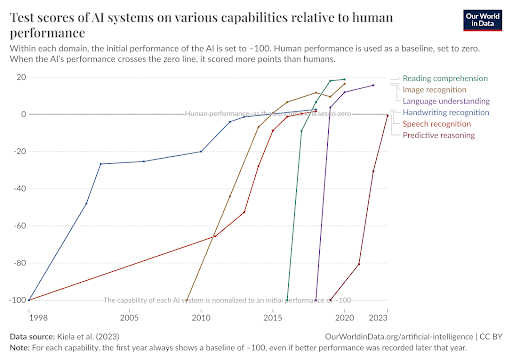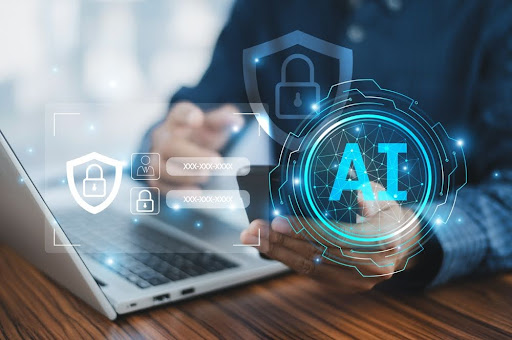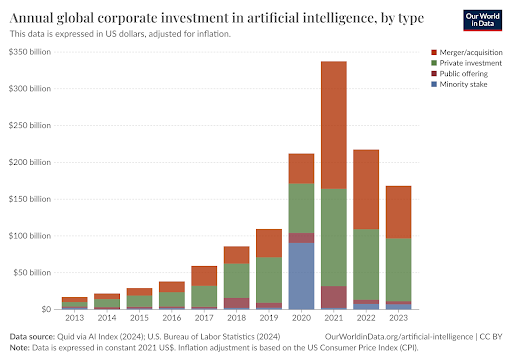Abstract: Artificial Intelligence (AI) is revolutionizing DevOps and Site Reliability Engineering (SRE) by automating tasks, enhancing observability, and enabling predictive analytics. AI-driven systems optimize software development, testing, and security, leading to faster deployments, better system reliability, and proactive issue resolution. This article explores AI’s impact on DevOps and SRE, illustrated with real-world examples and expert insights
Over the past two decades, I’ve seen key milestones in software development, from the shift to cloud automation and the transition from on-premises to hybrid and multicloud environments. Today, AI is driving the next stage of transformation. Unlike previous technological advancements, Generative AI is not just improving existing processes; it is fundamentally changing how we build, test, and secure software.
DevOps and Site Reliability Engineering (SRE) have long been essential to successful service delivery, with DevOps focusing on collaboration, automation, and quality, and SRE ensuring reliability while minimizing downtime. Today, AI is improving these practices by enabling self-adapting, self-diagnostic, and self-protecting systems that significantly enhance efficiency, reliability, and security standards.
In this article, we will explore how AI is transforming DevOps and SRE, with real-world examples and insights from my experiences as a leader at Google Cloud, Expedia, NTT Data, and Magic Software Enterprises.
AI-Powered Code Generation: From Assistance to Automation
Code development has always depended on humans during my time in this industry. Programming developers allocate most of their workdays to developing (mostly boilerplate) code sequences, detecting and resolving operational issues, and improving execution speed. Although automation has made things faster, since its inception code creation routines remained unchanged until current developments arrived.
The development process receives assistance from generative AI technologies throughout every stage of work. The likes of OpenAI’s ChatGPT, Microsoft Copilot, Google’s Code Assist and GitHub Copilot, amongst other things provides developers:
- Automated code generation, reducing development time for repetitive tasks.
- AI-assisted debugging, flagging potential issues before they cause failures.
- Code optimization, improving efficiency without requiring manual intervention.
These AI-driven enhancements align with findings from a 2023 GitLab report, highlighting AI’s role in reducing manual effort and improving development workflows.
How AI Compares to Human Developers

Despite these advancements, AI isn’t replacing developers—it’s enhancing them. But how well does AI perform?
AI has already outpaced humans in syntax-driven tasks like code generation and refactoring, but it lags in architectural design, problem-solving, and innovation.
As AI evolves, it will become more context-aware, but the core of software engineering will always require human expertise—especially in high-level decision-making.
AI in CI/CD Pipelines: Predicting and Preventing Failures
CI/CD pipelines streamline software delivery but still suffer from build failures, inefficient testing, and misconfigurations. AI makes pipelines smarter by predicting failures before they happen, optimizing test selection, and dynamically adjusting configurations to improve success rates.
One major inefficiency is redundant testing. Engineers often run complete test suites they don’t need, slowing deployment. AI analyzes historical build data to identify the most relevant tests, reducing execution time while maintaining quality. It also predicts failure points based on past errors, flagging configuration issues before they disrupt production.
According to a 2023 Gartner report, integrating AI into DevOps pipelines enhances deployment efficiency by optimizing test selections and reducing rollback incidents.
AI-driven dynamic configuration management further enhances CI/CD by automatically adjusting pipeline parameters based on previous deployment outcomes, preventing common misconfigurations and reducing rollback incidents.
The Measurable Impact of AI on CI/CD
| CI/CD Challenge | AI-Powered Solution | Observed Improvement |
| Build failures due to misconfigurations | AI predicts and corrects errors before deployment | 40% fewer rollbacks |
| Unnecessary test execution slowing builds | AI runs only the most relevant tests | 30% faster build times |
| Manual intervention is required in error handling | AI auto-resolves predictable pipeline failures | 50% less manual debugging |
AI-Driven Observability and Incident Response
Observability has been a key part of Site Reliability Engineering and traditional observability has always been reactive—engineers respond to failures after they occur. AI is transforming this approach by predicting and preventing issues before they escalate.
From Reactive to Predictive Monitoring
Instead of manually sifting through logs or waiting on user reports after an incident has occured, SRE teams now get real-time insights and automated fixes from AI. These AI-powered observability tools can:
- Detect anomalies early by analyzing system behavior and performance trends.
- Provide predictive alerts to warn teams of potential issues before they cause downtime.
- Automate remediation, resolving minor failures without human intervention.
- Recommend proactive actions to reconfigure the systems to handle predicted / potential longer term issues.
The Impact of AI-Driven Incident Response
- Faster issue resolution: AI identifies the root cause within seconds, reducing mean time to resolution (MTTR) by up to 60%
- Improved system uptime: Predictive monitoring can increase uptime by approximately 30%
- Reduced manual workload: Automated incident response can cut debugging time by around 50%
Disclaimer: These figures are derived from various studies and industry benchmarks measuring improvements across different use cases. While actual results may vary, they reflect general trends in AI-driven DevOps advancements. Data sources include Gartner [1][2] and CEUR [3], which explore AI’s impact on incident response, system monitoring, and automation.
I saw these benefits firsthand at Google Cloud when leading AI-driven observability enhancements and security and system recommenders. Customers who used these AI driven tools, saw significant improvements in their system reliability due to the proactive issue resolution
While driving an internal reliability improvements drive at Google, we enhanced service reliability, reduced downtime, and improved failure response using AI-driven automation for detection and analytics, ensuring proactive issue resolution and greater database resilience. This also freed up valuable engineering resources to work on engineering improvements rather than spending days trying to root cause system failures.
Additionally, while leading reviews of customer support cases and service quality for Google Databases, AI tools helped me automate the reporting of the critical reliability improvements and service quality issues, aligning AI-driven observability enhancements with real-world customer challenges to improve service reliability.
Challenges and Considerations
AI-based observability solutions offer numerous benefits to users but cannot represent an absolute solution for every organization. The success of AI-driven observability depends on maintaining accurate data since flawed training leads to either invalid notifications or major problem failures.
Human oversight is essential. While AI can automate routine responses, engineers must validate and refine decision-making to prevent unintended disruptions. Additionally, AI models require continuous learning, adaptation to new infrastructure changes, and evolving system behaviors to stay effective in dynamic Site Reliability and DevOps environments.
Why AI in Observability is the Future
Minor performance problems in organizations managing millions of daily transactions result in substantial financial losses and operational setbacks. Artificial intelligence for observability monitors system problems before user impact, so failures never occur in the first place.
AI monitoring increases Organizational infrastructure stability, reducing system outages and performance degradation issues. Through AI-based systems, resource utilization reaches peak efficiency, preventing cloud environment underperformance and resource overprovisioning.
Beyond reducing failures, AI shifts teams from reactive troubleshooting to proactive system management. Because of this approach, long-term improvements and innovation can replace teams dedicated to post-mortem investigations.
Implementing AI-driven observability strategies leads organizations toward decreased downtime and better operational efficiency, creating a more substantial, resilient software ecosystem.

Corporate Investment in AI-Driven DevOps and Site Reliability
AI has transitioned from a niche experiment to a cornerstone of enterprise strategy. Organizations across industries are restructuring workflows and scaling operations with AI-driven solutions to stay competitive in a rapidly evolving market.
From DevOps pipelines to Site Reliability tools , companies are channeling funds into automation, predictive analytics, and advanced cybersecurity systems. This strategic shift reflects a commitment to future-proof operations against inefficiencies, outages, and security risks.
The Surge in AI Investment
This strategic pivot is reflected in a dramatic increase in global AI investments. Companies stop their experimental practices because they invest in permanent AI technology solutions. AI coding tools collected over $1 billion in funding during 2023 because businesses view automation, scalable security, and intelligent analytics as highly valuable.
But it doesn’t stop there. Modern investments are moving toward two development areas: automated infrastructure self-correcting capabilities and software that predicts future regulatory standards to keep organizations compliant. Artificial intelligence assists enterprises in detecting potential threats through advanced modeling that operates in real-time to eliminate threats.

The graph above highlights the exponential growth of AI investment across categories such as mergers, private offerings, and minority stakes. The precise data illustrates that organizations increase their AI budget investments because AI serves as their strategy for operational resilience.
Companies implementing AI solutions today achieve multiple benefits, including accelerated software development, lower system outages, and boosted operational protection. Organizations that delay the adoption of AI face more than operational inefficiencies; they must deal with competitors who use AI to accelerate innovation, grow their business, and maintain operational resilience.
Organizations today must implement AI-driven DevOps / SRE approaches because it has become mandatory. The industry now uses this standard as its base definition of achievement in an environment where intelligence and automation command the direction.
The Future of AI in DevOps and Site Reliability Engineering
AI is no longer just a tool—it is actively transforming DevOps and Site Reliability Engineering by driving automation, efficiency, and security at every level.
In my experience, organizations adopting AI today gain faster deployments, fewer failures, and stronger security, while those who delay risk falling behind. As AI capabilities grow, these innovations will become even more impactful:
- AI-driven database intelligence, enabling automated performance optimizations and self-healing database workflows, has already been implemented in Cloud Databases.
- Autonomous SRE workflows, where AI-enhanced observability detects and resolves issues faster, significantly improve service reliability.
- AI-driven compliance and security, leveraging real-time threat intelligence, anomaly detection, and AI-powered security enforcement. Integrations like Security Command Center proactively identify risks, detect unusual patterns, and prevent potential security breaches before they occur.
- Smarter AI copilots and workflow automation tools, assisting engineers in system design, infrastructure optimization, and agile workflow management. AI-driven solutions have enhanced development predictability, reduced bottlenecks, and streamlined engineering processes across multiple teams.
- Proactive observability, where AI flags issues and predicts and prevents failures before they impact production environments—a core capability in AI-driven database optimizations.
- AI-enhanced Vector Databases boost search efficiency, query performance, and security through Vector DB enhancements, Natural Language Agents that convert queries from Natural Language to highly accurate Database queries.
My experience in cloud computing alongside DevOps and SRE teams clearly shows that AI technology will not replace human engineers. Yet, engineering professionals using AI systems will outperform those not adopting them. The adoption of AI-driven DevOps currently takes place in the market, and businesses that implement this transformation will achieve improved operational capabilities and security and scalability benefits.
The real question for enterprises today is not “Should we adopt AI in DevOps and Site Reliability Engineering?” but “How quickly can we integrate AI to stay ahead?”
About the Author
Samir Shilamkar is a technology leader with over 25 years engineering experience with technology firms like Google Cloud, Expedia, NTT Data and Magic Software Enterprises. His expertise spans full stack software Development, Testing, DevOps, Site Reliability Engineering, Cloud computing, and accessibility compliance.
References:
- CEUR Workshop Proceedings. (2023). Enhancing DevOps Using AI. CEUR-WS. https://ceur-ws.org/Vol-3790/paper12.pdf
- Gartner. (2023). How AI is transforming DevOps pipelines: Enhancing efficiency and reducing failures. Gartner. https://www.gartner.com/en/documents/5083131
- GitLab. (2023, August). The role of AI in DevOps. GitLab. https://about.gitlab.com/topics/devops/the-role-of-ai-in-devops/
- IBM Security. (2024). IBM Security X-Force Threat Intelligence Index 2024. IBM. https://www.ibm.com/reports/threat-intelligence
- Moogsoft. (2023, July 6). 5 takeaways from Gartner. Moogsoft. https://www.moogsoft.com/5-takeaways-from-gartner/
